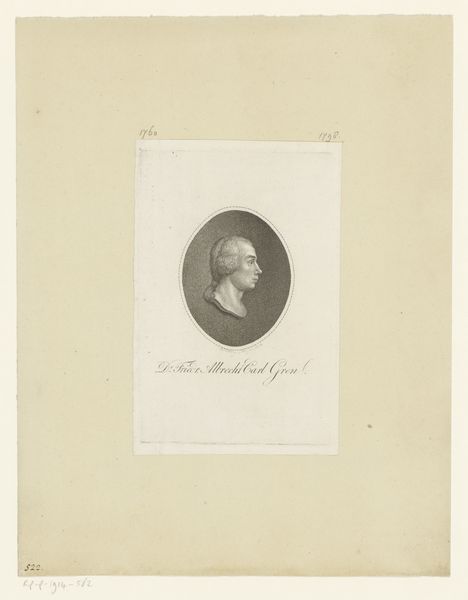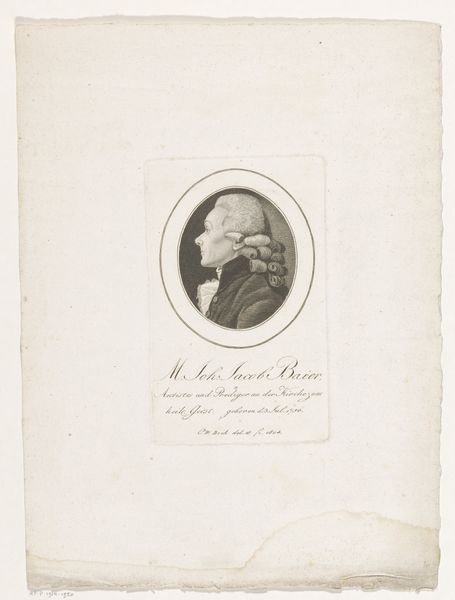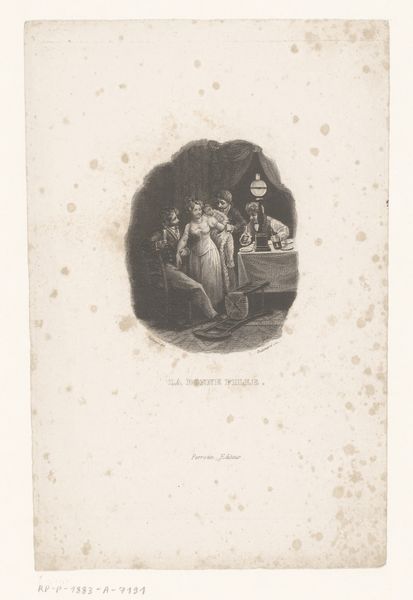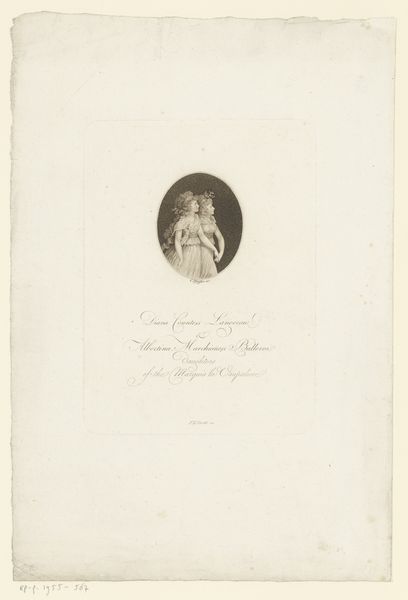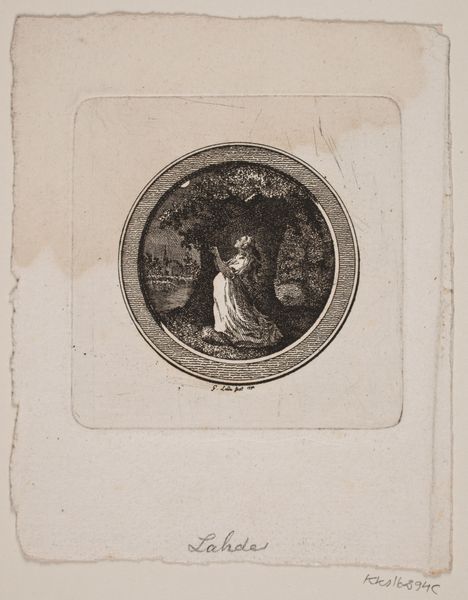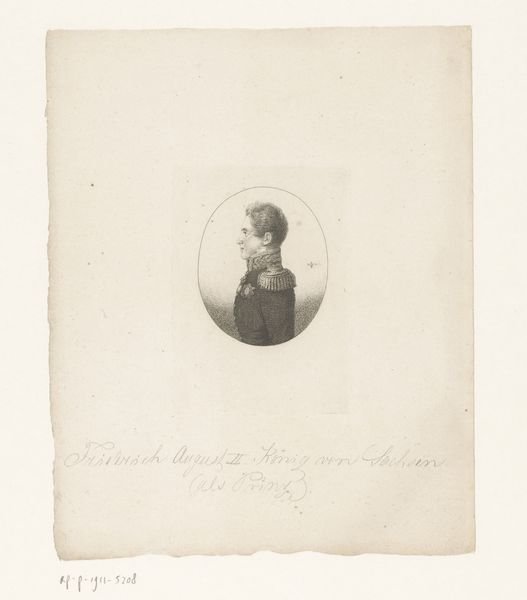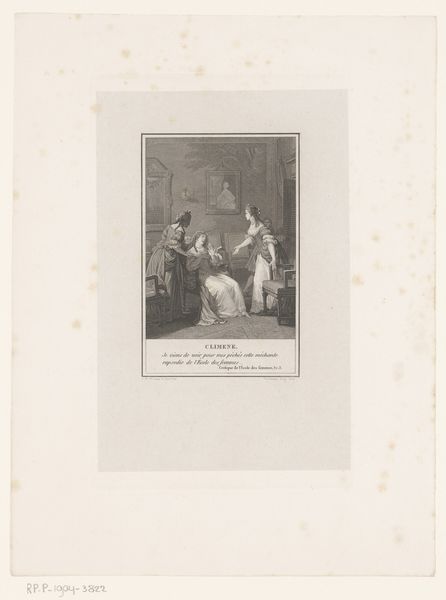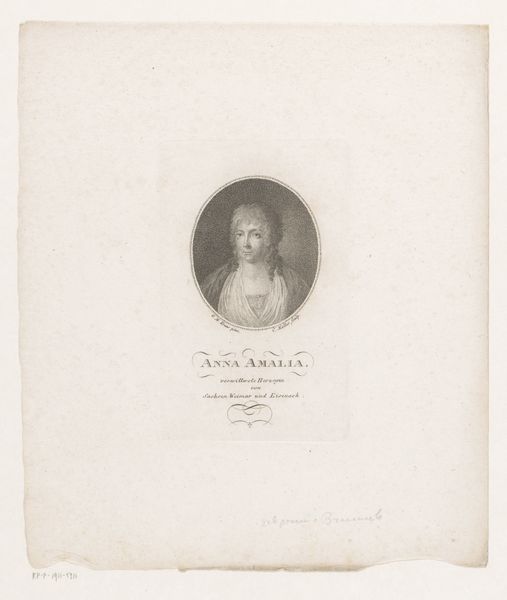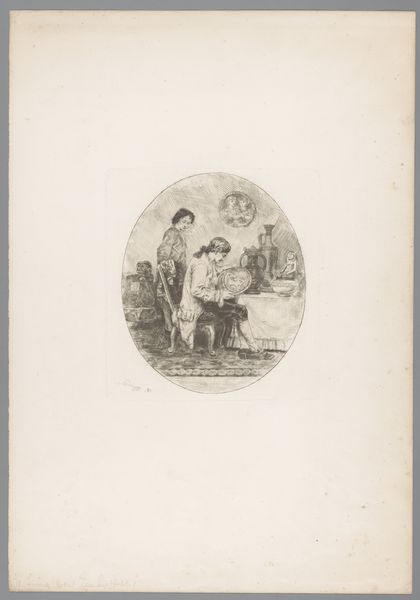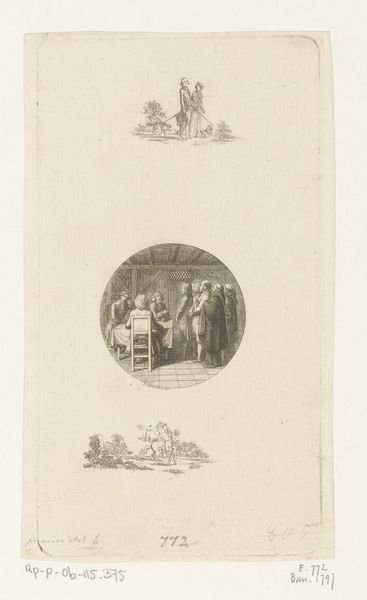
drawing, paper, engraving
#
portrait
#
drawing
#
neoclacissism
#
paper
#
engraving
Dimensions: height 194 mm, width 140 mm
Copyright: Rijks Museum: Open Domain
Curator: Johann Friedrich Bolt produced this delicate engraving, "Portret van Albertine en Franz Alexander von Kleist," around 1792. It's housed right here at the Rijksmuseum. Editor: My immediate impression is one of reserved intimacy. The oval frame gives it a locket-like feel, containing a quiet moment of connection. It feels so neoclassical, and so *stiff*. Curator: Indeed. Neoclassicism favored order and reason, but this portrait reveals tensions within that framework. Consider the figures themselves: Albertine, perhaps bound by societal expectations, while Franz Alexander holds what appears to be a book. Knowledge was itself a type of material property for elites. How do we interpret that in relation to their positions within a rigid social structure? Editor: Good point, Curator. I see Bolt carefully used the engraving process to emphasize textures - look at the soft folds in Albertine's dress compared to the sharp lines of Franz's jacket. You have a clear emphasis on their *things*: the materials they wear and carry mark them as property-owning people. We get to participate in an act of consumption by gazing, today. Curator: Absolutely. These material choices point to class distinctions but they are still shown here as if approachable--as if Bolt intended the work to be an encouragement. But an encouragement to what? The tension is in their positioning, which feels formal but in such an every-day context. Editor: This print might’ve also circulated among a specific, limited group - it's relatively small and was certainly made by hand, and thus had material restrictions in terms of audience. It suggests a network built upon material accessibility and ownership within that particular social stratum. Curator: Precisely. Bolt’s engraving becomes more than just a portrait; it reflects the complex social and material landscape of the late 18th century. It also offers us a tiny key for viewing gender as something to wear, as visible or invisible "property." Editor: Yes! Reflecting on this work allows one to re-assess the relationship between individuals and the physical stuff around them. We all need that occasional nudge! Curator: Absolutely. A perfect, layered neoclassical study of human interactions *in place*.
Comments
No comments
Be the first to comment and join the conversation on the ultimate creative platform.
